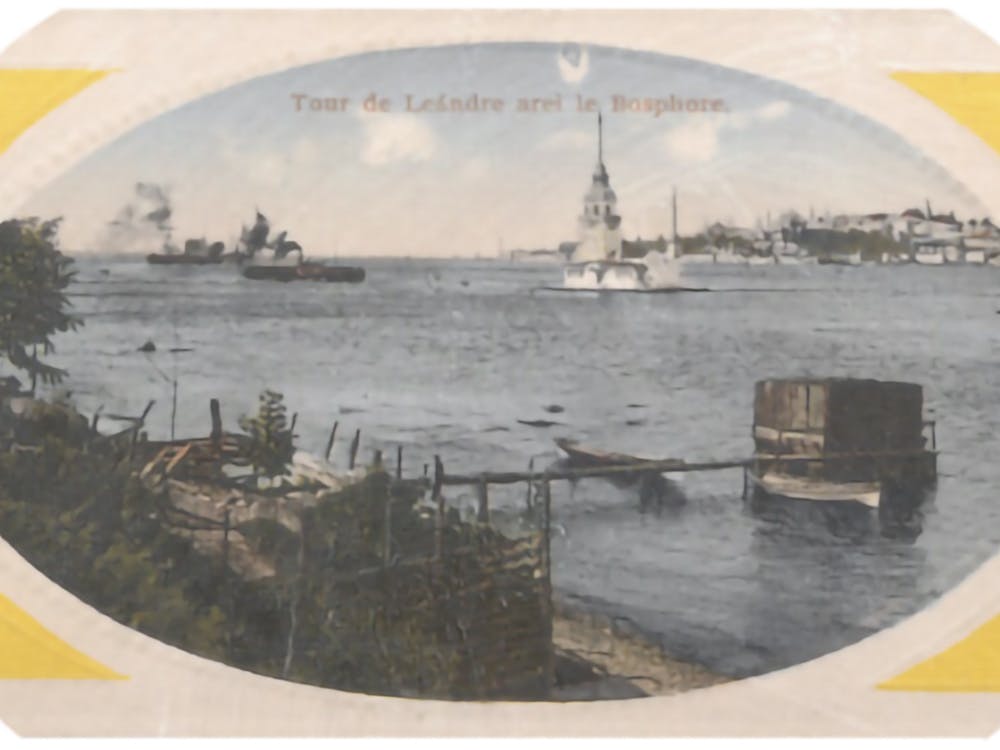Public gardens and open-air promenades gave the Ottoman Empire remarkable vistas of their cities. Yet only centuries later did these sites gain concession outside the impressive views they offered, their picturesque history carefully preserved as crown jewels in the archives of modern researchers. Berin Golonu, a pioneer in art history who teaches at the State University of New York at Buffalo, successfully extracted a wealth of information from the mix of postcards compiled in the Duke University Library as well as those she painstakingly gathered from her own travels. In her Sept 18. virtual seminar, she decodes the entangled mysteries that lay hidden in her collection.
Golonu's story unfolds in the Thessaloniki and Uskudar districts in the year 1870, in time to catch the opening of these gardens to the greater Ottoman society. The young professor transported her audience to gardens found on public terrain. She revealed that “there are more than thirty popular mesires in Istanbul alone" and they became the lounging area of the common folk. As these gardens grew in popularity and demand, the Empire began using these gardens as a space to cultivate civilized character. They often imposed rules on how a man must carry himself within this space. At the very least, lower-class women and Muslim sisters, who were excluded from the space, did not have to worry about the silent hegemony until decades after.
While these public gardens were created to the public appearances of the elite and extend the Empire's imposition on the public, there were times when they offered undeniable benefit in terms of public hygiene. These mesires, as Golonu explained, helped mitigate the spread of diseases by replacing and giving way to the expropriation of older recreational sites, like the muddy and certainly unsanitary graveyards.
The trend of modernization that accompanied these gardens offered a myriad of benefits, like the construction of sewage and transportation lines that indirectly elevated urban sanitation.
Once the gardens stepped out of its aesthetic role, it hurtled in the direction of unprecedented, irrepressible change. Around the time when daguerreotype photography was en vogue, several gardens were captured as evidence of the “outgrowth of the city’s modernizing transformation” in the most developed locations of the city under the governance of Sabri Pasha around 1869-1871. The early 1900s marked the full transformation of these Ottoman cities to tourist destinations abound with hotels, restaurants and highly visible commercial hubs. The intimate spaces of Ottoman royalty were commoditized to the extent that leisure-filled afternoons felt completely different between the eras of 1800 and 1900. Whereas the former offered a blanket of meadows to nap in, the latter stirred you awake with the smell of caffeine from a nearby coffee shop.
Golonu's side-by-side display of postcards of the 1800 Kagithane garden and the 1900 Taksim garden in Istanbul is telling in itself. In the older picture, there is evidently a slower experience of time. Golonu notes how one could probably spend the course of a whole afternoon picnicking. The modern picture, in contrast, showcases roaming subjects and unfilled seats revealing how this new type of leisure was tied to a price many could not afford. These sites serviced a new type of crowd and operated under the same capitalist clockwork as their European industrial idols, especially those built along train stations. They became the reception areas for foreign visitors until the rapid industrialization served by these gardens took over the landscape, and they were tragically among the first to be swallowed up.
However, like unruly vines growing from every which way, a new street life was cultivated on once sacred soil. Tourists who chronicled about the culture of the mesire in their memoirs recount a “dizzying assortment of entertainment activities taking place in these leisure sites,” from oil wrestling matches to bicycling and serenades on the shore. Greek and Albanian folk music could be heard from afar. Governments that pushed a code of conduct could not keep them enforced for long, and for good reason: while the exclusivity within these public spaces was not completely removed, the movement towards modernization had lowered restraint significantly such that people felt less pressured to do as they were told. A more diverse crowd came together in these public gardens, and leisure — true relaxing leisure — could finally be actualized.
And the gardens, like those that served as the main floor for Ottoman entertainment in the 1900s, did not disappear. Some of them are still waiting for us, waiting to be explored. Perhaps the biggest mystery of this whole narrative can be found in the evidence of what transpired centuries ago — these postcards. The promenades and pastoral sites were Westernized to the point that the public could buy postcards of these gardens themselves. Postcards documented everything, from the destruction of walls bordering the city harbors to changes in the ways the public occupied space. It remains a fanciful thought how these dynamic gardens managed to outpace the modernization that engulfed the rest of the 18th century, but how else would Professor Golonu have recreated this century-long transformation? We would not have had a story to tell.
Correction: An earlier version of the photo caption on this story incorrectly stated that Berin Golonu teaches at Duke, and it has been updated to reflect that she teaches at SUNY Buffalo. The story itself has also been updated to clarify Golonu's affiliation. The Chronicle regrets the error.
Get The Chronicle straight to your inbox
Signup for our weekly newsletter. Cancel at any time.

